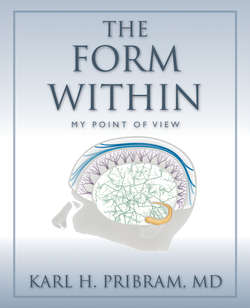Читать книгу The Form Within - Karl H Pribram - Страница 19
На сайте Литреса книга снята с продажи.
Beyond Correlation
ОглавлениеCorrelating an individual’s experience or his test behavior with a restricted brain location is a first step, but is not enough to provide an understanding of the brain-behavior-experience relationship. Currently, I am finding it necessary to stress this caveat once again with the advent of the new non-invasive brain-imaging techniques that are mostly being used to map correlations between a particular human experience or a particular test behavior with particular locations in the brain.
Unfortunately, many of the mistakes made during the 19th century are being made again in the 21st. On the brain side, finding “mirror neurons” matters much to materialists who feel that matter has now been shown to mirror our feelings and perceptions. But, as David Marr (now deceased) of the Massachusetts Institute of Technology pointed out, all we do with such microelectrode findings is remove the problem of understanding a process—in this case of imitation and empathy—from ourselves to the brain. We still are no further in understanding the ”how” of these processes.
At the behavioral level of inquiry there is a similar lack of understanding. There is almost no effort being made to classify the behaviors that are being correlated with a particular locus in the brain. What do the behaviors have in common that are being correlated with activity in the cingulate gyrus (or in the anterior insular cortex)? And how are these behaviors grounded in what we know about the physiology of these parts of the brain?
When relations of commonalities between behavior and parts of the brain are noted, they are often mistaken. “Everyone knows the limbic systems of the brain deal with our emotions.” This would be a nice generalization—except for the observation that when damage to the human limbic system occurs, a certain kind of memory, not human emotion is impaired.
And further—much has been made of the fact that the amygdala deal with “fear.” Fear is based on pain. The threshold for feeling pain remains intact after the removal of the amygdala. Fear is also based on memory of pain. Is memory the contribution of the amygdala to fear? If so, what other memory processes do the amygdala serve? Chapters 13 and 14 explore these issues
Among other issues, the chapters of The Form Within recount the research accomplished during the early part of the second half of the 20th century that provide answers to these issues—answers that were forgotten or swept under the rug by subsequent generations of investigators.
Mapping correlations, even when done properly, is only a first step in reaching an understanding of the processes involved in relating brain to behavior and to mind— correlations do not tell us “the particular go” of a relationship.
As David Hume pointed out toward the end of the 17th century, the correlation between a cock crowing and the sun rising needs a Copernican context within which it can be understood. Here in The Form Within, I shall provide the context within which the correlations revealed by the technique of brain imaging need to be viewed in order to grasp the complex relationships between our experience, our behavior and our brain. To do this, I have had to provide a richer understanding of the relationship between our actions and the brain than simply making maps, which is the epitome of exploring form as shape. Sensitized by my discussions with Lashley, without overtly articulating what I was doing in my research, I thus undertook to explore form as pattern.
